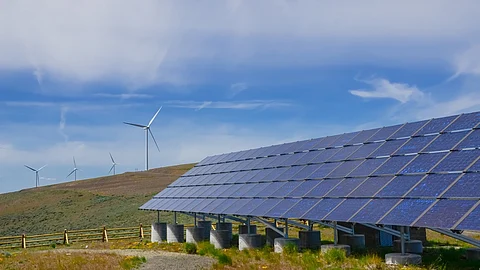

US Treasury restricts safe harbor: projects over 1.5 MW must prove physical work, not just incurred costs
Eligible wind and solar projects must be operational by 2027 or lose investment and production tax credits
Industry groups warn restrictions undermine clean energy growth, threatening small businesses and delaying affordable power deployment
The US Department of Treasury has released new rules for wind and solar energy projects to claim federal clean energy tax credits, putting in place tougher restrictions under President Donald Trump’s One Big Beautiful Bill Act (OBBBA).
With the latest guidelines, the one big concerning factor for the industry is the ruling regarding limitation of 5% safe harbor for projects with a nameplate capacity of 1.5 MW.
Any projects above this capacity will not be able to use the safe harbor provision unless they prove the physical work test which translates into physical work of a significant nature and continuous program of construction.
This ‘significant nature’ refers to off-site (manufacture of components, mounting equipment, support structures such as racks and rails, inverters, and transformers, and other power conditioning equipment) and on-site (for solar facility it includes the installation of racks or other structures to affix solar panels) work, and not the amount or the cost incurred.
To claim ITC, eligible projects have time till December 31, 2027 to be placed in service post which the Section 45Y credits for production and 48E for investment will be eliminated.
According to assessment of IRS’ Notice 2025-42 by Holland & Knight law firm, the new guidance is effective for solar and wind facilities, the construction of which begins prior to July 5, 2026, and on or after Sept. 2, 2025.
These guidelines from the Treasury were anticipated after Trump signed an executive order instructing the department to terminate clean energy production and ITC and PTC for wind and solar facilities to advance the implementation of the OBBBA (see Trump Signs Executive Order To End Green Energy Subsidies).
Analysts at ROTH said that the guidance came in ‘substantially better than expected’ especially as there was no retroactivity. "Since there is no retroactivity, safe harbored volumes appear to be healthy through 2029, and there is a path to safe harbor volumes through 2030," stated ROTH.
Nevertheless, Solar Energy Industries Association (SEIA) called it an act of ‘energy subtraction’ that will ‘further delay the buildout’ of affordable, reliable power.
In a statement, SEIA said, “The Treasury Department’s new guidance to further restrict energy tax credits is part of an unprecedented side deal the administration made with anti-clean energy ideologues to undermine Congress and further harm America’s solar industry. This is a blatant rejection of what Congress passed in H.R. 1, and it threatens thousands of small businesses across the country that are the backbone of our clean energy economy.”
Meanwhile, the US administration continues its crackdown on renewable energy industry. There is heightened scrutiny for wind and solar projects by the Department of Interior that will now have to go through an elevated review by the Officer of the Secretary of the Interior, Doug Burgum (see Elevated US Federal Scrutiny For Wind & Solar Energy Projects).
The Environmental Protection Agency (EPA) recently terminated $7 billion Solar for All program that awarded this amount to help bring affordable energy to low-income communities, announced EPA Administrator Lee Zeldin on his X account.
TaiyangNews will explore the US solar market in view of the regulatory shifts at the upcoming RE+ 2025 event in Las Vegas, US. It is co-organizing the 2025 Solar Made in USA summit in collaboration with RE+ and EUPD Research. To be held on September 8, 2025, it will feature leading names from the world of solar to discuss the future of US solar and storage manufacturing and future strategies for the players in light of the regulatory hurdles created by the OBBBA. Registrations are open and can be done here.
